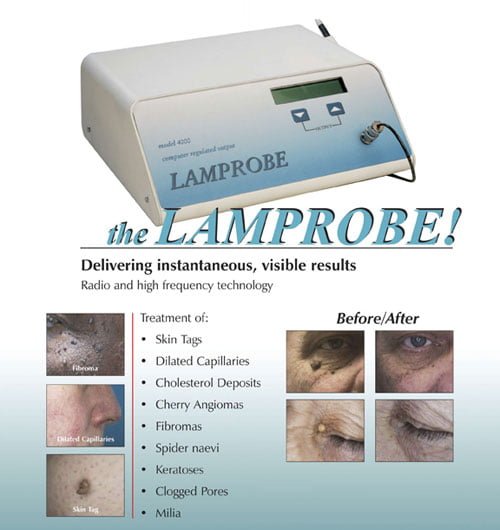Are you tired of those pesky milia that seem to never go away? Look no further than the Lamprobe, a revolutionary device that offers an effective solution for removing milia. With its advanced technology and gentle treatment, the Lamprobe targets milia directly, providing quick and efficient results. Say goodbye to milia and hello to smooth, flawless skin with the help of the Lamprobe.
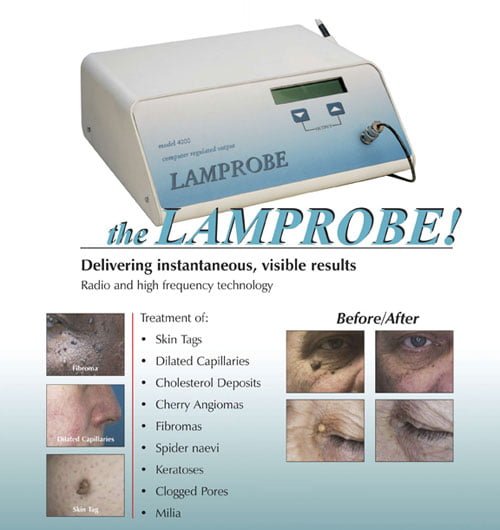
This image is property of images.squarespace-cdn.com.
What is Lamprobe
Definition
Lamprobe is a non-invasive skin treatment device that utilizes radiofrequency technology to address various skin concerns. It is specifically designed for the removal of Milia, small white or yellowish cysts that commonly appear on the face. Developed as an alternative to traditional Milia removal methods, Lamprobe offers a quick and effective solution to these unsightly blemishes.
Purpose
The primary purpose of Lamprobe treatment is to effectively remove Milia without the need for surgical intervention or incisions. This innovative device uses high-frequency energy to target and eliminate the build-up of keratin, the protein responsible for the formation of Milia. By gently applying radiofrequency waves to the affected area, Lamprobe helps to break up and disintegrate the cysts, resulting in smoother and more even-toned skin.
How it Works
Lamprobe works by emitting a high-frequency current that generates heat within the Milia cysts. The heat causes the keratin to soften and melt away, gradually diminishing the Milia. The treatment is performed using a small, precise probe that is carefully applied to the surface of the skin. The radiofrequency energy emitted by the probe is highly effective in targeting and eliminating the cysts, while minimizing damage to the surrounding healthy skin. Lamprobe treatment is typically quick and virtually painless, making it a popular choice for Milia removal.
The Effectiveness of Lamprobe for Milia Removal
Benefits of Lamprobe
Lamprobe offers several benefits for those seeking effective Milia removal. Firstly, it is a non-invasive procedure, meaning there are no incisions or sutures involved. This makes it a safer and less traumatic option compared to surgical removal methods. Additionally, Lamprobe treatment has a high success rate in completely removing Milia, resulting in a significant improvement in the appearance of the skin. The procedure is generally well-tolerated and requires minimal downtime, allowing individuals to resume their normal activities soon after treatment.
Limitations of Lamprobe
While Lamprobe is highly effective for Milia removal, it is important to note that it may not be suitable for everyone. Individuals with certain skin conditions, such as active infections or severe acne, may not be suitable candidates for Lamprobe treatment. Additionally, those with a history of keloid scarring or sensitivity to radiofrequency energy should consult with a dermatologist to determine if Lamprobe is the right treatment option for them.
Comparison with Other Milia Removal Methods
When comparing Lamprobe with other Milia removal methods, such as extraction or cryotherapy, Lamprobe has several advantages. Unlike extraction, which involves manually squeezing or lancing the cysts, Lamprobe does not puncture the skin, reducing the risk of infection and scarring. Cryotherapy, on the other hand, uses freezing temperatures to destroy Milia, which can sometimes be uncomfortable for patients. Lamprobe offers a gentler and more precise approach, resulting in a more comfortable and effective treatment experience.
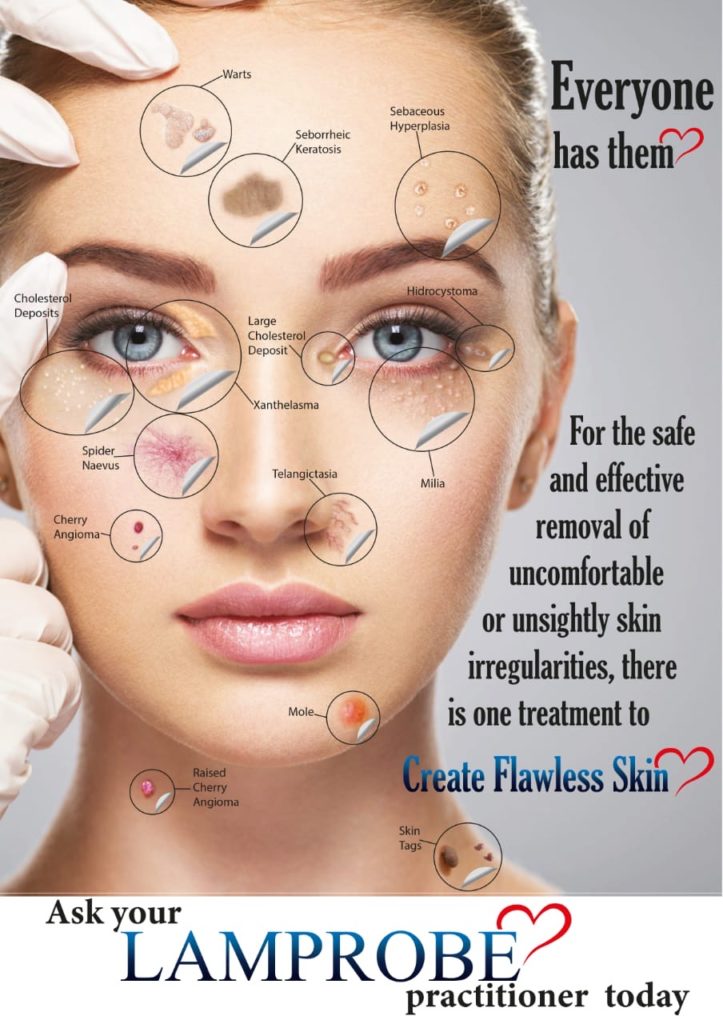
This image is property of drdebbienorval.com.
Preparing for Lamprobe Treatment
Consultation with a Dermatologist
Before undergoing Lamprobe treatment, it is important to schedule a consultation with a qualified dermatologist or skincare professional. During this consultation, the provider will assess your skin condition, determine your suitability for Lamprobe treatment, and address any questions or concerns you may have. The consultation is also an opportunity to discuss your desired outcome and establish realistic expectations for the procedure.
Skin Preparation
In the days leading up to your Lamprobe treatment, it is important to properly prepare your skin to ensure optimal results. This may include avoiding sun exposure, tanning beds, and excessive exfoliation, as these can increase skin sensitivity. It is also advisable to discontinue the use of certain skincare products, such as retinoids or acids, as they can potentially interfere with the effectiveness of the treatment. Your dermatologist will provide specific instructions regarding skincare preparation based on your individual needs.
Pre-Treatment Instructions
In addition to skin preparation, your dermatologist may provide specific pre-treatment instructions to follow before your Lamprobe session. This may include avoiding certain medications or substances that can thin the blood or increase the risk of bleeding, such as aspirin or alcohol. It is important to carefully adhere to these instructions to ensure a safe and successful treatment.
The Process of Lamprobe Treatment
Application of Local Anesthesia
Before starting the Lamprobe treatment, a dermatologist may apply a topical anesthetic cream or gel to numb the treatment area. This helps minimize any discomfort or sensation during the procedure. The anesthetic is typically left on the skin for a short period to ensure optimal numbing before proceeding with the treatment.
Lamprobe Treatment Technique
Once the skin is adequately numbed, the dermatologist will begin the Lamprobe treatment. The practitioner will hold the Lamprobe probe against each Milia cyst individually and administer short bursts of radiofrequency energy. This process is repeated for each Milia until all affected areas have been treated. The duration of the treatment can vary depending on the number and size of the Milia being addressed.
Duration of Treatment
The duration of Lamprobe treatment can vary depending on the specific needs of the patient. In most cases, a single treatment session can be completed within 15-30 minutes. However, multiple sessions may be required for individuals with a larger number of Milia or more extensive skin concerns. Your dermatologist will discuss the expected duration of your treatment during the initial consultation.
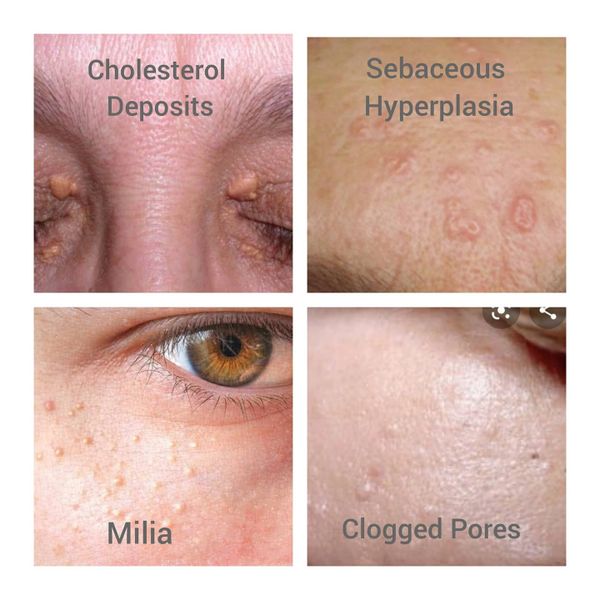
This image is property of img1.wsimg.com.
Recovering from Lamprobe Treatment
Post-Treatment Care
After the completion of Lamprobe treatment, your dermatologist will provide specific post-treatment care instructions to promote healing and minimize any potential side effects. This may include applying a soothing and protective ointment to the treated areas, avoiding sun exposure, and refraining from picking or scratching the skin. It is important to follow these instructions carefully to ensure optimal healing and recovery.
Expected Side Effects
Lamprobe treatment is generally well-tolerated, with minimal side effects. However, it is not uncommon to experience some mild redness, swelling, or mild discomfort immediately following the procedure. These side effects typically subside within a few hours to a few days. It is important to note that everyone’s individual experience may vary, and your dermatologist will provide personalized guidance based on your specific needs.
Healing and Recovery Time
The healing and recovery time after Lamprobe treatment is relatively quick compared to more invasive procedures. Most individuals can expect the treated areas to fully heal within 7-10 days. It is important to keep the treated areas clean and well-moisturized during the healing process to promote optimal results. If any concerns or complications arise during the recovery period, it is crucial to contact your dermatologist for further guidance or evaluation.
Maintaining Results after Lamprobe Treatment
Skin Care Routine
To maintain the results achieved with Lamprobe treatment, it is important to establish and adhere to a regular skincare routine. This may include cleansing the skin twice daily with a gentle cleanser, applying a moisturizer suitable for your skin type, and incorporating a broad-spectrum sunscreen into your daily routine. Regular exfoliation, using gentle methods such as chemical exfoliants, can also help prevent the formation of new Milia.
Preventing Milia Formation
In addition to a proper skincare routine, certain lifestyle and environmental factors can influence the occurrence of Milia. To prevent the formation of new Milia, it is important to avoid using heavy or greasy skincare products that can clog the pores. Consistently removing makeup before bed and avoiding excessive sun exposure can also contribute to healthy and clear skin.
Follow-Up Treatments
While Lamprobe treatment can effectively remove Milia, it is important to note that new cysts may form over time. To maintain a clear complexion, follow-up treatments may be necessary as recommended by your dermatologist. The frequency and necessity of these treatments will depend on individual factors, such as skin condition and genetic predisposition. Regular check-ups with your dermatologist will help ensure that your skin remains healthy and free from recurring Milia.
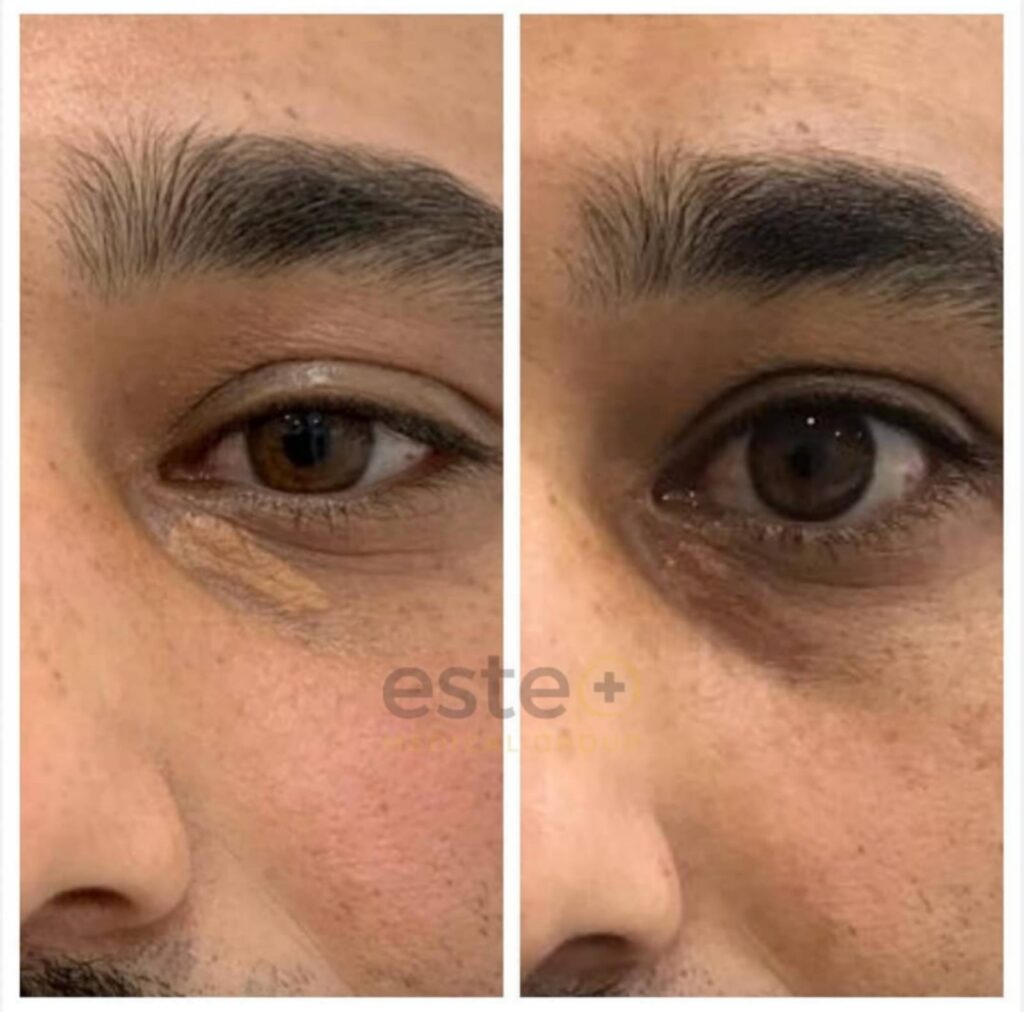
This image is property of assets-global.website-files.com.
Potential Risks and Complications
Possible Side Effects
Although Lamprobe treatment is generally safe, there is a small risk of potential side effects. These can include temporary hyperpigmentation or hypopigmentation, scarring, infection, or allergic reactions. However, these complications are rare when the procedure is performed by a qualified and experienced professional. It is important to choose a reputable practitioner to minimize the risk of adverse effects.
Risk Factors to Consider
Certain individuals may have a higher risk of experiencing complications or side effects from Lamprobe treatment. Factors such as a history of keloid or hypertrophic scarring, sensitivity to the radiofrequency energy used, or underlying skin conditions may increase the risk. It is crucial to discuss any potential risk factors with your dermatologist before undergoing the procedure to ensure your safety and optimal outcomes.
Choosing a Professional and Licensed Practitioner
Researching Qualified Providers
When choosing a practitioner for your Lamprobe treatment, it is essential to conduct thorough research. Look for providers who are licensed and have the necessary qualifications and experience in performing Lamprobe procedures. Seek recommendations from trusted sources, such as friends or family, or consult online directories and forums for reputable professionals in your area.
Checking Credentials and Experience
Before scheduling a Lamprobe treatment, it is important to verify the credentials and experience of the practitioner. Check if they are board-certified dermatologists or licensed skincare professionals. Consider their years of experience performing Lamprobe procedures and their track record in achieving successful outcomes. If possible, request to see before and after photos of previous patients to gauge the quality of their work.
Reading Customer Reviews
Customer reviews can provide valuable insights into the overall satisfaction and experiences of past patients. Read reviews from multiple sources, such as online platforms or social media, to gather a well-rounded understanding of the practitioner’s reputation. Positive reviews from a diverse range of patients can be a good indication of the quality of service provided.
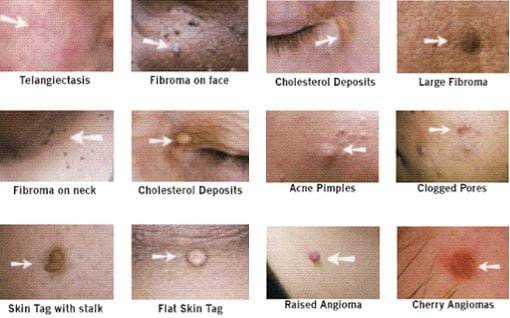
This image is property of serendipitymedispa.com.au.
Costs and Insurance Coverage
Average Costs of Lamprobe Treatment
The cost of Lamprobe treatment can vary depending on several factors, including the geographic location, the extent of the Milia being treated, and the expertise of the practitioner. On average, the cost of a single Lamprobe session can range from $100 to $300. It is important to note that multiple treatment sessions may be required for optimal results, which can increase the overall cost. Your dermatologist will provide a personalized assessment and cost estimate during the initial consultation.
Insurance Coverage and Reimbursement
Lamprobe treatment is considered a cosmetic procedure and is typically not covered by medical insurance. Since Milia removal is often considered a cosmetic concern rather than a medical necessity, it is important to verify with your insurance provider before scheduling the treatment. In some cases, insurance may partially cover the procedure if it is deemed medically necessary due to the size or location of the Milia. Discuss reimbursement options with your insurance provider to determine the extent of coverage, if any.
Patient Experiences and Testimonials
Real-Life Stories
Reading real-life stories and testimonials from individuals who have undergone Lamprobe treatment can provide valuable insights into the effectiveness and experiences associated with the procedure. Many individuals have reported a significant improvement in their skin’s appearance and texture after treatment, with a reduction or complete elimination of Milia. Engaging in online forums or support groups specific to skincare concerns can be a great way to connect with others who have undergone Lamprobe treatment.
Before and After Results
Before and after photos are often an excellent visual representation of the results that can be achieved with Lamprobe treatment. Many dermatologists and skincare professionals showcase these photos to demonstrate the efficacy of the procedure. Requesting to see before and after photos during your consultation can help you set realistic expectations and gain a better understanding of the potential outcomes.
In conclusion, Lamprobe treatment offers an effective and non-invasive solution for the removal of Milia. Its ability to target and eliminate these cysts using radiofrequency technology has made it a popular choice among individuals seeking a quick and efficient treatment option. By carefully considering the benefits, limitations, and potential risks associated with Lamprobe, as well as selecting a qualified practitioner, individuals can achieve smoother and clearer skin, free from the bothersome presence of Milia.

